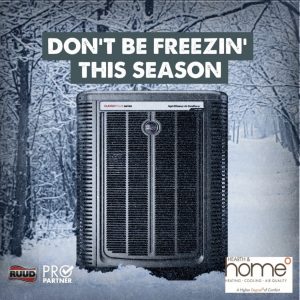To Do Today
- Turn down the temperature of your water heater to the warm setting (120°F). You’ll not only save energy, you’ll avoid scalding your hands
- Start using energy-saving settings on refrigerators, dishwashers, washing machines, and clothes dryers.
- Survey your incandescent lights for opportunities to replace them with compact fluorescents (CFLs). These lamps can save three-quarters of the electricity used by incandescents. The best targets are 60-100W bulbs used several hours a day. New CFLs come in many sizes and styles to fit in most standard fixtures.
- Check the age and condition of your major appliances, especially the refrigerator. You may want to replace it with a more energy-efficient model before it dies.
- Clean or replace furnace, air-conditioner, and heat-pump filters.
- If you have one of those silent guzzlers, a waterbed, make your bed today. The covers will insulate it, and save up to one-third of the energy it uses.
This Week
- Visit the hardware store. Buy low-flow showerheads, faucet aerators, and compact fluorescent light bulbs, as needed. These can be purchased from any hardware or home improvement store. CFLs are now sold at some drug stores and grocery stores.
- If your water heater is old enough that its insulation is fiberglass instead of foam, it clearly will benefit from a water heater blanket from the local hardware or home supplies store. (To tell the difference, check at the pilot light access (gas). For electric water heaters, the best access is probably at the thermostat, but be sure to turn off the power before checking.)
- Rope caulk very leaky windows.
- Assess your heating and cooling systems. Determine if replacements are justified, or whether you should retrofit them to make them work more efficiently to provide the same comfort (or better) for less energy.
This Month
- Collect your utility bills. Separate electricity and fuel bills. Target the biggest bill for energy conservation remedies.
- Crawl into your attic or crawlspace and inspect for insulation. Is there any? How much?
- Insulate hot water pipes and ducts wherever they run through unheated areas.
- Seal up the largest air leaks in your house—the ones that whistle on windy days, or feel drafty. The worst culprits are usually not windows and doors, but utility cut-throughs for pipes (“plumbing penetrations”), gaps around chimneys and recessed lights in insulated ceilings, and unfinished spaces behind cupboards and closets. Better yet, hire an energy auditor with a blower door to point out where the worst cracks are. All the little, invisible cracks and holes may add up to as much as an open window or door, without you ever knowing it!
- Set your thermostat back (forward) when you can accept cooler (warmer) conditions. This generally includes night time and whenever you leave your home for several hours. Many people find it easier to use an Honeywell programmable thermostat that will automatically adjust the thermostat based on your time-of-day instructions.
This Year
- Insulate. If your walls aren’t insulated, have an insulation contractor apply blown-in insulation (cellulose or fiberglass) to the walls. Bring your attic insulation level up to snuff.
- Replace aging, inefficient appliances. Even if the appliance has a few useful years left, replacing it with a top-efficiency model is generally a good investment.
- Upgrade leaky windows. It may be time to replace them with energy-efficient models or to boost their efficiency with weatherstripping and storm windows.
- Have your heating and cooling systems tuned up in the fall and spring, respectively. Duct sealing can also improve the energy efficiency and overall performance of your system (warm-air furnace and central air conditioners).
Know that you are making a difference! |



